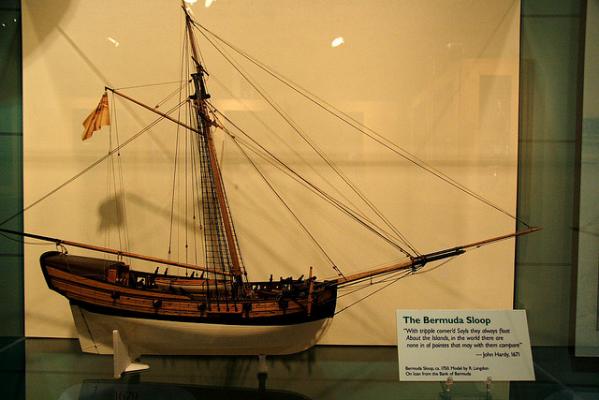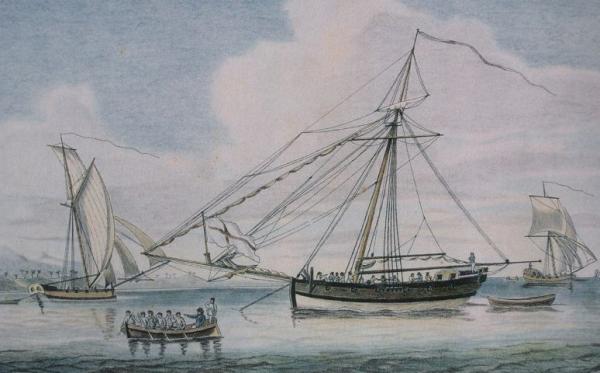-
Posts
841 -
Joined
-
Last visited
Content Type
Profiles
Forums
Gallery
Events
Everything posted by michaelpsutton2
-
Just got my copy from Amazon. Large format 10.5" BY 10.5" 340 pages Lots of big really clear pic's some in full color A number of original draughts .I like the fact that the author has not gone the route of using redrawn plans. I ordered a "used like new" copy and it was less than $30 including shipping. Dirt cheap compared to the price of some books. This book covers all of the English royal yachts from the Stuarts through today. It's well organized and clearly written. The volume makes it possible for me to untangle the 19 different yachts named "Mary" . And best of all (one of my pet peeves) they have arranged the pages so that the pictures and the plans don't attempt to straddle the gutter in the center of the pages. You can actually see the whole thing. The pictures and the plans are so well done that it made me want to sit down and start work on a yacht right now This one is a keeper and I highly recommend it.
-
You are trying to capture a moment in a constantly changing process and not an event.
-
You can find plenty of pic's to support any way you want to set it. My view is that when on fishing trips the boat would be tacked and then the topsails and the staysail too, for that matter would be attended to after thing on deck had been coiled down and sorted out. When really racing men would be stationed at the mastheads to take care of all of this as quickly as possible
-

Colors for HMS Bounty constructo 80817
michaelpsutton2 replied to vmwilson1's topic in Wood ship model kits
The anatomy of the ship shows that a lot of broadside might well have been "bright". You might be closer to the truth than the movie version. -
I know a lot of the books we use are damned expensive but how else are the publishers going to support the production of future volumes. You know the next volume of "Sloop of War" isn't going to make the New York Times best seller list. If we don't support the Conway Maritime, Seaforth, Naval Institue Press. Nautical Research Guild and their kind then the research that we depend on will dry up and die.
-

Resources on American privateering
michaelpsutton2 replied to DBorgens's topic in Nautical/Naval History
Maybe not "American" but definitely "the Americas" : Jewish Pirates of the Caribbean: "How a generation of swashbuckling Jews carved out an empire in the New World" by Kritzler. It was a good read and something that I knew nothing about. -

Colors for HMS Bounty constructo 80817
michaelpsutton2 replied to vmwilson1's topic in Wood ship model kits
For years maybe even decades, the popular perception about what the Bounty looked like were shaped by that bright blue replica built in 1960 for the movie and by the cover art on the Revel plastic model. On a side note the sail plan of the 1960 ship was very different from what we know today. -
I have a copy of some pages from Thomas Macdonough's 1817 letter book. He was at the commander there 1815-1818. There is a set of measurements for the masts, yards & sails of the USS Constitution. They are undated but are entered in with the letters of 1817. There are also figures for some of the 74's. It is pretty straight forward stuff except there is a sail listed as "upper gaff topsail" . There is a gaff topsail as well. This is the well known triangular fore & aft sail shown so clearly in the Ware sail plan. The dimensions of this sail are leech 56', foot 36' & tack 54'9". When I draw it out the results look just like you might expect. The upper gaff topsail measures leech 24'3", foot 10'6", & tack 25'9". It appears to be a smaller version of the gaff topsail. Being as the gaff topsail is essentially a light weather kite, I cannot see the need for a "storm" version of it. Didi the upper gaff topsail somehow set above the gaff topsail? Is it some kind of gaff top gallant sail?
-
It is interesting to read Humphrey's often quoted ideas about what qualities the new ships should have. It is so very similar to discussions today on how to beat the rules for America's Cup challengers. Two hundred plus years later....Everybody is still looking for that trick to beat the rules. The more things change the more they are the same.
-
I rec'd my copy yesterday. A ton of great information. I like the discussion of the various rigs. How ever I am a touch disappointed in the "book" Too many of the plans and illustrations are lost in the gutter between pages. It would have been far better to reduce the pics a little and get them on a single page. The illustration are a little weak on contrast and focus. I think that for volumes of this kind of limited appeal to succeed the book itself has to be a great item, not just the research behind it. As an example: The plan of the Favorite of 1757 is situated so that the quarter badge and quarter deck hances are rather difficult to see. It's a fine reference to have in my library but I think just a touch more effort on the part of the publisher could have made it great.
-
I still have a great fondness for the works of Basil Lubbock: The Last of the Windjammers, The Colonial Clippers, The Tea Clippers, The Downeasters, The Western Ocean Packets, The Nitrate Clippers. Harold Underhill: Deepwater Sail,, Sail Training Ships, Masting & Rigging the Ocean Carrier. H I Chapelle, D R McGregor, Basil Greenhill, David Lyon, Brian Lavery, Rif Winfield, Robert Gardiner But far and away I still remember a day over 40 years ago. It was about midnight on a Tuesday and the the library was almost deserted. I was looking for a book on Revolutionary War Naval History for a college course and I came across a crumbling copy of the illustrated catalog for the Henry H Rodgers collection of models at Annapolis. I didn't know models like this existed. I sat on the floor of the aisle deep in the stacks of the Howard Tilton Librabry of Tulane University slowly going from one model to the next. In 15 minutes I developed a fixation that continues to this very day. I own a copy now and take it off the shelf when the work is not going the way I know that it should. I tell myself that one day I will learn to do work like that.
-

HMS Lizard 1697
michaelpsutton2 replied to igorcap's topic in CAD and 3D Modelling/Drafting Plans with Software
I just noticed this discussion. So I am about a year late. What did you you use for your original plan? Just eyeballed from the pic's? -
In England at least, some ships were sheathed with an expendable / renewable thin layer of planks. Sometimes "noxious compounds" were put under the planks. It was fairly effective at keeping worms out of the real planking but did nothing to inhibit the growth of weed during long jouneys. Some ships returned from years long trips to the tropics trailing long streamers of seaweed which slowed their speed to a crawl. There were limited experiments with closely spaced big headed nails
-
In his book, "Ship Models in Minature" Donal McNarry complains about the difiiculty of making furled sails in general. He says that very few models have them. He says that part of the problem is that the materials used do not compress to scale and so the furled sails are always too bulky. On modern sail boats, (i hesitate to use the word yacht for the boats I have sailed on) brails are used to gather a sail when the sheet is loosed but a separate line is used to secure it for any length of time, None of the sails I ever tended were ever furled on the stay itself. Maybe some other current day sailors with experience on the big boats could weigh on on this one. Maybe you might search the web for pic's of a sail training ship that furls her staysails on the stays and ask them how they do it.
-
Good morning The armed virginia sloop was of a type generally known as a "Bermuda Sloop" Chapman has an example in his Architectura Navalis Mercatoria. There are any number of other contemporary illustrations form the period. None show any structures on the deck at all. The decks are rather steeply crowned and even the tillers are underneath. Most small ship designs would have been steered from a position with better visibility . I have a small bit of sailing experience, no real blue water" but the design makes me think it was designed to shed water and shield the helmsman if overtaken by a following sea.
-

Running rigging for sails
michaelpsutton2 replied to malcermie's topic in Masting, rigging and sails
If you look at some of the early rigged British ship models (ie: ST George at Annapolis) and some at tne NMM you can see how some modelers have chosen to portray runnung rigging with no sails. But remember that this shows old model makers conventions, not actual real life practice -
The breast back stays were "abreast the mast. Or in laymen's terms directly on either side of the mast. They were rigged from the topmast with a block and fall hooked to an eye set on the channel. The eye bolt should be as close as possible to the centerline of the mast but aft of the first shroud. The eye is set outboard of the deadeyes for the shrouds. The fall belays to the pinrail inside of the shrouds. In practice I believe that only the weather breast back stay would be taught. The lee would be slack. I have read where in harbor the breast back stays could function as lifts for the boat booms. Smaller vessels would have single blocks Larger would have double.
-
I have it on order with Amazon. They say it will be released in July. I also ordered "British Warships in the Age of Sail 1817-1863: Design, Construction, Careers & Fates" by Rif Winfield. It's due to be released next month. And just maybe it will get to be worth $2000.00 like the 1793-1817 volume. I have the first twovolumes but they are only worth about $75.00 Can anyone tell me why the only one I am missing is so darn expensive?
-

Colors for HMS Bounty constructo 80817
michaelpsutton2 replied to vmwilson1's topic in Wood ship model kits
There are no known accurate comtemporary, eyewitness portraits of the ship. Pictures of other ships during the same years should help you decide what you think. The fact that no one who actually saw the ship felt obliged to comment on her color means that it was nothing unusual. If Bligh had painted her pink, then you can be sure someone would have noted it in a journal. The dust jacket of "HMS Bounty: Anatomy of the Ship" comes pretty close to what I think was most likely what she looked like -
There is a lines plan at the national maritime museum. It is not a plan of the ship. It is the lines taken off of the famous Science Museum model. It is listed but not shown on the website as # ANN0035. Not much detail but it's a starting poit if you want to attempt your own reconstruction
About us
Modelshipworld - Advancing Ship Modeling through Research
SSL Secured
Your security is important for us so this Website is SSL-Secured
NRG Mailing Address
Nautical Research Guild
237 South Lincoln Street
Westmont IL, 60559-1917
Model Ship World ® and the MSW logo are Registered Trademarks, and belong to the Nautical Research Guild (United States Patent and Trademark Office: No. 6,929,264 & No. 6,929,274, registered Dec. 20, 2022)
Helpful Links
About the NRG
If you enjoy building ship models that are historically accurate as well as beautiful, then The Nautical Research Guild (NRG) is just right for you.
The Guild is a non-profit educational organization whose mission is to “Advance Ship Modeling Through Research”. We provide support to our members in their efforts to raise the quality of their model ships.
The Nautical Research Guild has published our world-renowned quarterly magazine, The Nautical Research Journal, since 1955. The pages of the Journal are full of articles by accomplished ship modelers who show you how they create those exquisite details on their models, and by maritime historians who show you the correct details to build. The Journal is available in both print and digital editions. Go to the NRG web site (www.thenrg.org) to download a complimentary digital copy of the Journal. The NRG also publishes plan sets, books and compilations of back issues of the Journal and the former Ships in Scale and Model Ship Builder magazines.




